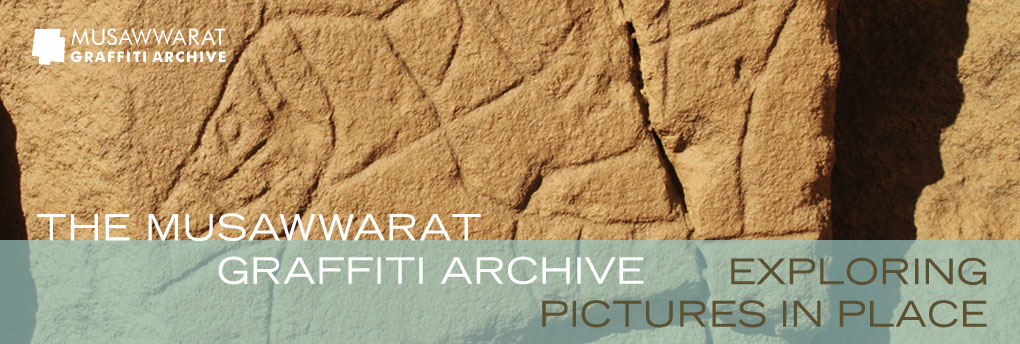Dating the Musawwarat Graffiti
It is clear that graffiti incised into the cut and prepared sandstone block surfaces cannot date older than the quarrying of the stone and the building of the Great Enclosure. When exactly individual parts of the building complex were constructed is still a matter of discussion, however, and subject of ongoing research. The Great Enclosure has a complicated building history, with parts of the complex pulled down and re-erected in hitherto unknown intervals. Some graffiti are located on blocks that apparently were re-used from earlier building periods; they may thus date older than the upstanding walls.
Most of the walls visible today have been assigned to the 6th building period, which has been dated to the reign of King Arnakhamani (c. 235-218BC). Earlier building periods and with them earlier graffiti may thus date older. Together with new excavations addressing questions of building history and the dating of building episodes, the Musawwarat graffiti may actually help in dating the individual parts of the building complex, for example through palaeographic studies.
Whenever possible, date ranges were assigned to the graffiti mainly on the basis of image content and comparisons with graphic depictions in more securely dated archaeological contexts. Some motifs can be more securely dated than others, which can only be assigned very broad temporal ranges. Some motifs seem to have been popular for long periods of time, while others only appeared for short time spans. For example, while many motifs can with some certainty be assigned to the Meroitic period, it is still a matter of discussion to what extent (which of) these motifs lived on into the post-Meroitic period. In the post-Meroitic period new motifs, such as the camel, became popular and stayed so for hundreds of years throughout the Medieval Christian as well as the Islamic periods. Observations of differences in manner of depiction, technique of manufacture, ‘patination’, as well as regularities in superimposition sequences can help gaining a better idea of a temporal sequence within long-lived motifs by establishing relative chronologies. A comprehensive chronological framework for the Musawwarat graffiti will be one of the eventual outcomes of the Musawwarat Graffiti Project.
Text: Cornelia Kleinitz (2012)






